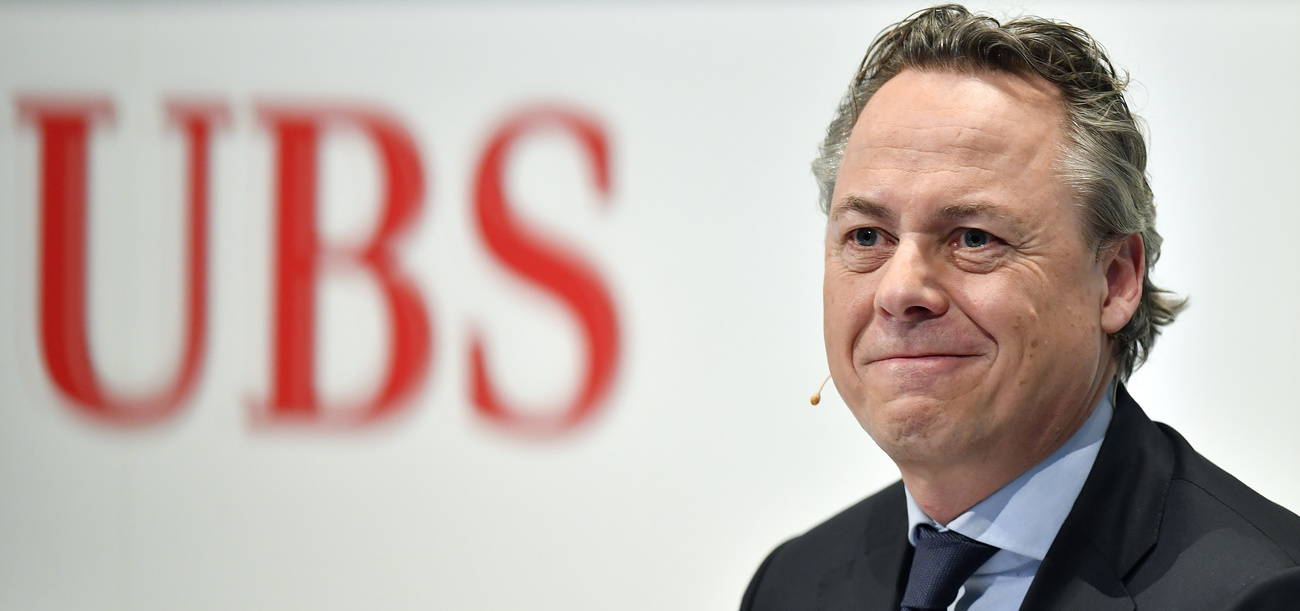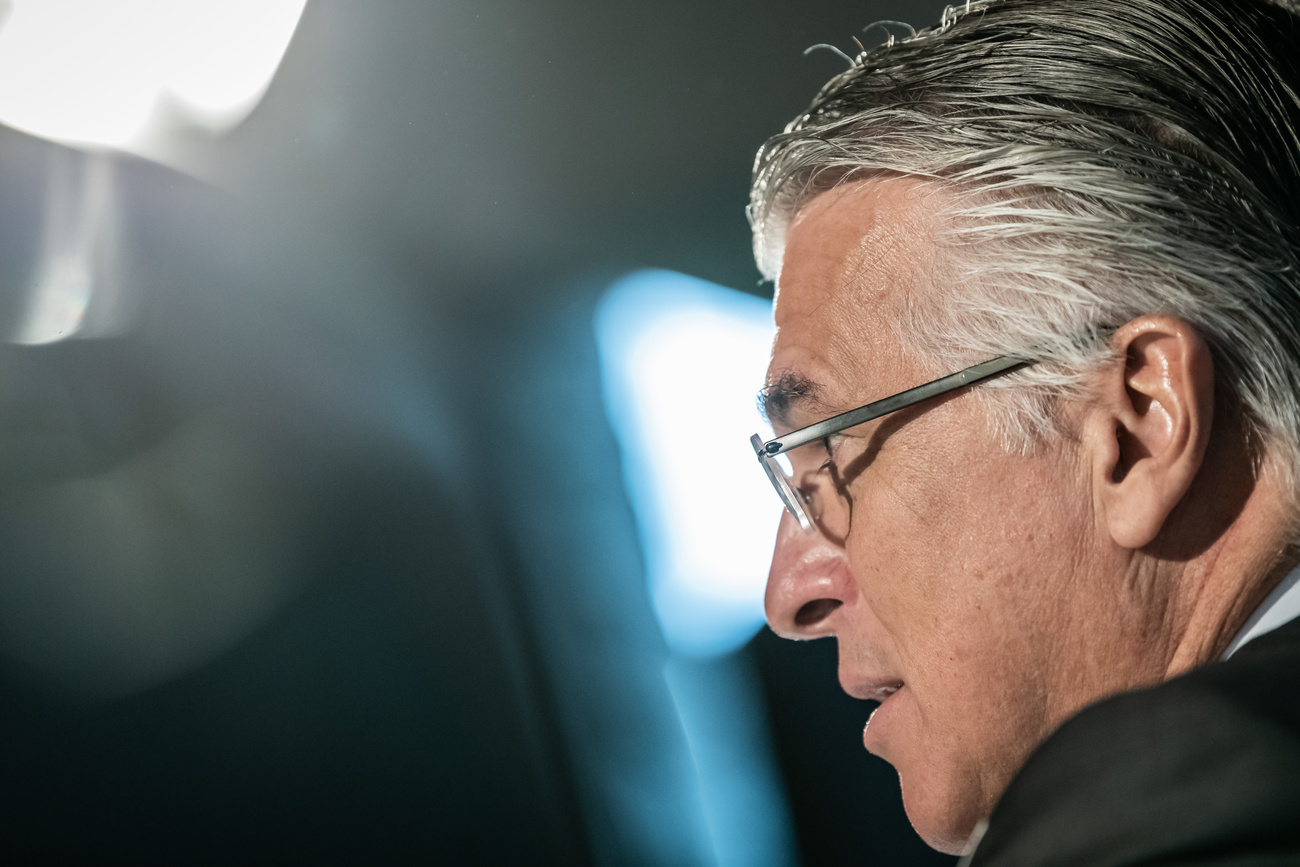UBS chief under pressure to deliver as markets turn

Weeks after announcing that UBS, the world’s biggest wealth manager, would be embarking on a push into the crowded US market late last year, chief executive Ralph Hamers received an interesting proposition.
Advisers for Wealthfront, a Californian start-up that uses artificial intelligence to sell investment products, suggested UBS should buy the business.
A deal would allow Hamers, who made his name as a digital champion running Dutch lender ING, to put his stamp on the bank with its first big acquisition since the financial crisis.

Yet after agreeing to pay $1.4 billion in cash for Wealthfront, UBS ditched the deal this month without an explanation. Days later the bank announced it would return more money to shareholders, though senior executives said the two decisions were unconnected.
Hamers, who was handpicked two years ago by then UBS chair Axel Weber to succeed Sergio Ermotti, has made growing UBS’s presence in the US and developing a digital wealth manager for so-called mass affluent customers a central plank of his strategy.

More
Former UBS CEO sees no need for two big Swiss banks
Credit Suisse takes limelight
But the aborted acquisition has set back those plans and now the 56-year-old Dutchman is under pressure to deliver, along with three influential executives at the bank’s top table.
Colm Kelleher, the bank’s internationally respected chair, Naureen Hassan, the recently installed tech-savvy head of the bank’s US business, and the fiercely ambitious Iqbal Khan, whose role as wealth management chief has just been expanded and is widely seen as a future CEO, all have a keen interest in the strategy for the American market.

More
Swiss fintech rebounds to rude health
“There are a lot of internal politics going on,” said a banking executive close to the UBS hierarchy. “The market is closely watching how the dynamic will play out.”
By several measures, Hamers has enjoyed a successful first two years at the helm. The Swiss bank emerged from the coronavirus pandemic with a series of record-breaking results as its wealthy clients benefited from central banks pumping liquidity into the financial system.
The turmoil at its fierce rival Credit Suisse has also been helpful, allowing Hamers to settle into the role without too much scrutiny. Although outwardly it appeared to be business as usual, Hamers has spent the time reorganising his executive team and making internal structural changes.
“Everyone in Switzerland has been focused on Credit Suisse for the past two years,” said a Zurich-based banker. “No one has been too concerned by UBS because it has been delivering through the cycle.”
Plain-speak coaching
When UBS announced an $861 million trading loss tied to the collapse of family office Archegos last April, for example, the news was overshadowed by the $5.5 billion loss at Credit Suisse.
Hamers began unveiling his grand strategy for the bank last October. When Kelleher was named chair a few months later, his experience as a former president of Morgan Stanley was heralded as a good fit for the strategy, given the US bank’s leading position in the country’s wealth market.
Kelleher has taken Hamers under his wing, according to people familiar with their relationship. The 65-year-old Irishman has coached Hamers in how to communicate with international investors, who are less interested in the bank’s agile working culture and more focused on three-year profit targets.
At their weekly hour-long catch-ups, the plain-speaking Kelleher banned Hamers from using management buzzwords such as “ecosystems” and “purpose”, the people said.
The pair embarked on a US roadshow to persuade more US asset managers to become top shareholders in an attempt to drive the bank’s valuation closer to Wall Street peers. The feedback, according to people with knowledge of the talks, is that investors were receptive, but that they are waiting to see Hamers deliver on his strategy.
UBS declined to provide a comment for this article.
Executive reshuffle
While UBS is one of Europe’s most valuable banks, with a price to book ratio — which compares its market value with its total assets — of 1, it trades at a discount to Wall Street lenders JPMorgan on 1.3 and Morgan Stanley on 1.56.
“Colm is getting increasingly important and having more and more influence on the long-term strategy,” said a top 10 shareholder in UBS. “He is very present and is having a lot of interactions with clients, high net worth individuals and investors.”
The abandonment of the Wealthfront deal came at the same time as a reshuffle at the top of UBS, with Khan becoming sole head of the bank’s wealth management business, taking on responsibility for the Americas with the retirement of his former co-head Tom Naratil.
The bank also recruited Hassan as overall president of the Americas business from the Federal Reserve Bank of New York, where she was first vice-president and chief operating officer.
Hassan, who had previously been chief digital officer at Morgan Stanley’s wealth business, has been tasked with leading UBS’s strategic growth and digital plans in the Americas, a brief that had initially included integrating Wealthfront.
“She’s very smart and would have looked at that Wealthfront deal with a forensic lens,” says a banker who knows her well.
A senior executive at UBS said that while the overall strategy for the US remained the same, Hassan had her own ideas on how it should be delivered.
Wealthfront over-valued?
Analysts viewed the Wealthfront acquisition as more symbolic than transformative, given the lack of clarity over the fintech’s financials and its $27 billion of assets under management compared to UBS’s $3.9 trillion.
The bank made the case to investors that Wealthfront would provide investment services to UBS’s Workplace Wealth Solutions platform and also bring in hard-to-recruit tech staff, according to people briefed on those discussions.
But the tumbling valuations of fintech companies this year — dropping on average more than 50%, compared to a 29% fall in the Nasdaq Composite — left Wealthfront’s $1.4 billion price tag looking expensive.
Hamers’ record on previous tech deals has also come under recent scrutiny. This year ING completed the wind-down of a controversial payments subsidiary, Payvision. In 2018, under Hamers, ING bought a majority stake in Payvision that valued the business at €360 million. ING has also closed down Yolt, a personal finance app launched in 2016.
With the long bull run in stock markets over and the global economy slowing, Hamers must now execute his strategy against a far less forgiving backdrop.
Copyright The Financial Times Limited 2022

In compliance with the JTI standards
More: SWI swissinfo.ch certified by the Journalism Trust Initiative










You can find an overview of ongoing debates with our journalists here . Please join us!
If you want to start a conversation about a topic raised in this article or want to report factual errors, email us at english@swissinfo.ch.